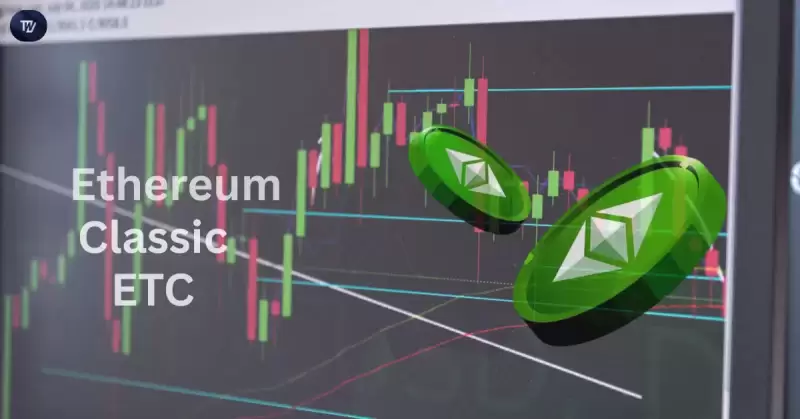 |
|
 |
|
 |
|
 |
|
 |
|
 |
|
 |
|
 |
|
 |
|
 |
|
 |
|
 |
|
 |
|
 |
|
 |
|
Cryptocurrency News Articles
Ethereum (ETH) Daily Burn Rate Shows Signs of Declining, Profitability Metrics Trend to Zero
Mar 27, 2025 at 03:00 am
Ethereum's daily ETH burn rate, a key feature introduced by the 2021 EIP-1559 update to manage fees and supply, shows signs of declining, based on recent chart analysis highlighted by Miles Deutscher.

In the rapidly evolving landscape of cryptocurrency, Ethereum’s daily ETH burn rate, a pivotal aspect introduced by the 2021 EIP-1559 update to effectively manage fees and control supply, has shown signs of decline, converging toward zero. This observation is part of broader chart analysis by Miles Deutscher, a renowned on-chain analyst.
(Chart: Miles Deutscher / Data: Glassnode)Despite a recent surge in cryptocurrency prices, notably Bitcoin and Ethereum, Deutscher highlights that Ethereum’s profitability has reached its lowest point in a considerable period. This downturn is evident in the converging trends of ETH burns and issuance, ultimately leading toward zero burns.
This occurrence has implications for network usage and the varying opinions on the significance of ETH burns. Deutscher notes that lower network activity or reduced transaction volumes can lead to minimal transaction fees. In turn, this can affect validators' earnings and reduce the attractiveness of staking in generating yield.
However, some members of the crypto community view this as a temporary lull in activity, anticipating a rebound that will escalate burns again. Alternatively, another perspective focuses on the fact that profitability has slid into negative territory, which might influence market sentiment.
Why Is ETH Burn Declining?
There could be several reasons why this is happening, but first, it’s prudent to understand what’s actually going on.
Ethereum’s revenue is primarily driven by network activity, which generates transaction fees. Falling fees indicate lower demand for block space, implying that fewer users are willing to pay high gas fees. Lower fee revenue can impact validators and Ethereum stakers, making ETH less attractive as a yield-generating asset. It’s no secret that in times of low yields, user participation in a specific token might reduce.
It’s challenging to precisely pinpoint the reasons for Ethereum’s decline, but lower on-chain activity is a factor. This signifies a slowdown in Ethereum’s DeFi ecosystem, with diminished trading volumes and fewer transactions on the mainnet. Considering that Ethereum’s burn mechanism is linked to gas fees, lower gas fees translate to reduced burns. Moreover, fewer high-fee transactions result in less ETH being burned.
While this analysis offers insights, it’s essential to approach it with caution, as there’s room for interpretation. However, it’s worth noting that at present, there's no urgent cause for concern.
What Are the Potential Implications?
It might be still early to predict the outcome of the news, but there are at least a few options that should be noted.
In instances where burns outpace issuance, ETH becomes deflationary. A trend toward zero burns increases the possibility of the total ETH supply expanding again, which could affect its long-term value narrative.
Ethereum validators earn from transaction fees and MEV (Maximal Extractable Value). If fees remain low, staking rewards decrease, which would likely discourage participation in Ethereum staking.
As we move forward, we will observe whether on-chain activity rebounds, driven by new innovations, higher DeFi volumes, or other factors. If so, then we can expect Ethereum’s burn rate and profitability to quickly recover from this downturn.
Disclaimer:info@kdj.com
The information provided is not trading advice. kdj.com does not assume any responsibility for any investments made based on the information provided in this article. Cryptocurrencies are highly volatile and it is highly recommended that you invest with caution after thorough research!
If you believe that the content used on this website infringes your copyright, please contact us immediately (info@kdj.com) and we will delete it promptly.
-

-

-

-

- Henry Winkler Knows How to Make a Good First Impression
- Apr 17, 2025 at 08:45 am
- During an appearance on the What In The Winkler?! podcast, hosted by the actor's wife Stacey Weitzman and daughter Zoe Winkler, Henry's daughter-in-law Jessica Barden — who is married to his son Max — recalled her introduction to the Happy Days star.
-

- Ethereum Classic (ETC) Price Faces Renewed Selling Pressure, Testing Critical Support at $14.30
- Apr 17, 2025 at 08:40 am
- Ethereum Classic (ETC) is navigating through turbulent waters as its price faces renewed selling pressure. Despite the recent volatility, ETC continues to hover just above a critical support level
-

-

-

- Use BetMGM bonus code WTOP1500 to claim the best welcome offer in your state for the NBA Play-In Tournament
- Apr 17, 2025 at 08:40 am
- Use BetMGM bonus code WTOP1500 to claim the best welcome offer in your state for the NBA Play-In Tournament. Sign up here to win bonus bets or place your favorite wager of the week.
-

- Arthur Hayes, CEO of BitMex, Says China's Response to President Trump's Tariffs Will Trigger the Bitcoin (BTC) Bull Cycle
- Apr 17, 2025 at 08:30 am
- Arthur Hayes, co-founder and CEO of BitMex, says China’s response to President Trump’s tariffs will trigger the Bitcoin (BTC) bull cycle. Several countries are adjusting


























































